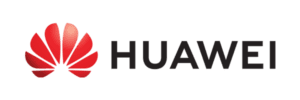Next-generation firewalls (NGFWs) are a core cybersecurity product, a foundational security tool every organization needs to protect their network from intruders.
As defending data and applications become more complicated, the security products built to withstand evolving threats also grow more powerful. The vast expansion of IoT devices, remote work, and advanced threats like ransomware have made protecting the perimeter more challenging and more critical than ever.
We surveyed the enterprise firewall market, and in our analysis nine NGFW vendors stand out.
Top NGFW Solutions
- Palo Alto: Best for Large Enterprises
- Fortinet: Best for the Value
- Check Point: Best for Sandboxing
- Barracuda CloudGen Firewall: Best for Hybrid Cloud Environments
- Cisco: Best for Consistent Network Policies
- Forcepoint: Best for Cluster Management
- Huawei: Best for Cloud Service Providers
- Juniper Networks: Best for SMEs with distributed networks
- Sophos XGS: Best for Small Security Teams
- 9 Important Features of Next-Generation Firewall Solutions
- Choosing the Right NGFW Solution for You
- Bottom Line: Best Next-Generation Firewall Solutions
Palo Alto: Best for Large Enterprises
Born from the mind of Nir Zuk – who helped develop the first stateful inspection firewall and IPS – Palo Alto Networks was the first company to release a “next-generation firewall” in 2007. The market leader continues to innovate with physical (PA-Series), virtual (VM-Series), and container (CN-Series) firewall solutions. PAN’s firewalls provide comprehensive visibility and control of distributed network segments within increasingly complex network architecture.
Palo Alto is a strong choice for businesses that need to protect virtual environments, on-premises solutions, and container environments with products from a single vendor. Palo Alto’s NGFW lineup is one of the most comprehensive products on the market. It’s also one of the most expensive. Large enterprises with built-out, experienced IT and security teams will benefit most from Palo Alto’s many features because they have the resources to explore and deploy a full-featured platform.
Key features
- Options for SMBs up to enterprise-scale organizations, MSPs, and large data centers
- Integrate existing user repositories to control application access with user-based policies
- Central management (Panorama) gives administrators a single point to manage NGFWs
- Threat detection and intrusion prevention informed by machine learning
- Protection for Kubernetes with exfiltration prevention and DevOps-friendly configuration
Pros
- Highly feature-rich, for large enterprises that need comprehensive functionality
- NGFW available for container protection
Cons
- Palo Alto is one of the more expensive NGFW solutions, and prices could be challenging for small businesses
- Multiple customers reported long wait times for technical support
Recognition
Palo Alto Networks is widely considered one of the best firewall solutions in the marketplace. The PA-Series earned the vendor Leader designation in the 2022 Gartner Magic Quadrant for network firewalls and Leader status in the Forrester Wave in 2022.
We named Palo Alto the top firewall vendor last year, followed by Fortinet and Check Point.
On Gartner Peer Insights, the firewall vendor has an average score of 4.6/5 stars over 1,100+ reviews. Palo Alto Networks’ highest reviews and ratings cited product capabilities and ease of use. In the latest CyberRatings test results, Palo Alto firewalls received a AAA rating (the highest rating of ten).
Pricing
Depending on the firewall series, starting prices for Palo Alto firewalls range from about $1,000 for the PA-410 to around $200,000 for the high-end PA-7000 series. Contact the Palo Alto sales team or your reseller for more information. Palo Alto also has a cloud NGFW pricing estimator that teams can use to find the approximate cost for their business.
Read more about Palo Alto Networks firewalls:
- Palo Alto Networks PA Series Review: NGFW Features & Cost
- Check Point vs Palo Alto Networks: Top NGFWs Compared
- Fortinet vs Palo Alto: Compare Top Next-Generation Firewalls
Fortinet: Best for the Value
With roots at NetScreen, brothers Ken and Michael Xie continue developing some of the industry’s most robust firewall technology more than twenty years later. Fortinet’s firewall series, FortiGate NGFWs, serve a range of clients from the home office to distributed enterprise organizations and data centers. FortiGate combines SSL inspection, IPS, and web filtering to consolidate security capabilities and give administrators visibility across network segments.
Fortinet NGFW prices tend to run less expensive than Palo Alto. If your business is a little smaller but still needs enterprise-class network security, look at the Fortigate series.
Key features
- Real-time threat intelligent defenses informed by AI-powered FortiGuard Services
- Security Processing Units (SPUs) and vSPUs accelerate network security computing
- Fortinet’s security-focused operating system, FortiOS, with federated upgrades
- Zero trust capabilities to identify suspicious users and devices and protect segments
- Scalable IPsec VPN tunneling for securing a remote and distributed workforce
Pros
- Fortinet’s NGFW has solid SD-WAN features for businesses that want an SD-WAN alternative alongside their firewall.
- Fortinet has an attractive, well-designed user interface.
Cons
- Multiple Fortinet customer reviews spoke of problems with technical support.
Considering an SD-WAN solution? Read about eSecurity Planet’s picks for the best enterprise SD-WANs.
Recognition
Fortinet sits atop the firewall industry for many enterprise organizations. Its FortiGate solution earned the vendor Leader designation in the 2022 Gartner Magic Quadrant for network firewalls, and Leader status in the 2022 Forrester Wave. In the most recent CyberRatings test results, Fortinet firewalls received a AA rating (the second-highest rating of ten).
On Gartner Peer Insights, the firewall vendor has an average score of 4.6/5 stars over 2,300+ reviews. Fortinet’s reviews and ratings cite ease of deployment, product capabilities, and improving compliance and risk management.
Pricing
FortiGate entry-level/branch F series appliances start at around $600, while the very high-end 520 Gbps FortiGate 7121F can cost $1 million or more with support and enterprise protection. Contact Fortinet or your reseller for specific quotes for your business. Fortinet has a page with broad estimates of firewall hardware costs, but for specific info you’ll want to talk with sales.
Learn more about network firewalls and the role they play in enterprises.
Check Point: Best for Sandboxing
Longtime firewall vendor Check Point Software Technologies delivers a robust NGFW solution with its series of Quantum Security Gateways. The American-Israeli vendor has threat prevention solutions for organizations of all sizes that include IPS, anti-bot, application control, URL filtering, and more.
Check Point’s modern solution is also noteworthy for its SandBlast Zero-Day Protection, offering threat emulation and extraction for the most advanced attacks. Consider Check Point if your business needs intensive sandboxing needs, particularly for applications that have high end user traffic. Check Point, Fortinet, and Palo Alto can all meet high security needs; whichever is best will depend in part on your IT environment.
Key features
- Hybrid infrastructure compatible, including physical, virtual, cloud, and mobile segments
- SandBlast, the cloud-based emulation engine for stopping hackers in their tracks
- Extensive physical appliance options featuring single and multi-domain management
- Central management with rollouts and rollbacks of policy configurations
- Maestro Orchestrator, a network security solution for hyperscale implementations
Pros
- Easy-to-use SmartConsole dashboard
- URL filtering features
- Advanced sandboxing
Cons
- Customers had trouble finding knowledgeable support engineers to assist with technical issues
- Some users found VPN configuration and troubleshooting difficult
Recognition
Check Point is widely known as one of the earliest innovators of the firewall industry. Check Point earned the Leader designation from the 2022 Gartner Magic Quadrant for network firewalls. In the 2022 Forrester Wave for Enterprise Firewalls, the vendor also received Leader status.
On Gartner Peer Insights, the firewall vendor has an average score of 4.5/5 stars, with over 1,500+ reviews. Check Point’s highest reviews and ratings cited product capabilities and ease of deployment. In the latest CyberRatings test results, Check Point firewalls received the highest rating, AAA (the highest rating of ten).
Pricing
Contact Check Point sales or resellers to learn more about NGFW pricing.
Barracuda CloudGen Firewall: Best for Hybrid Cloud Environments
The Barracuda CloudGen Firewall was designed with the hybrid era in mind: its Firewall F-Series is designed to preserve legacy hardware while meeting new challenges in hybrid network environments. Administrators have the latest features to combat advanced threats with traffic management, SD-WAN, IDPS, and VPN capabilities built-in. Barracuda relies on multiple detection layers, including threat signatures and static code analysis, in an era where signature-based defenses are increasingly unreliable.
Barracuda is a good choice for protecting hybrid cloud infrastructures, particularly if your business needs to monitor connections between multiple cloud environments.
Key features
- Hybrid infrastructure compatible with firewalls for on-premises, virtual, and cloud
- Advanced threat protection, enabling full system emulation for detecting malware
- Stateful deep packet inspection to block malformed packets and attacks
- High availability with automated load balancing and uplink options
- Control over objects, repositories, updates, privileges, and configuration management
Pros
- Designed particularly for hybrid cloud infrastructures
- Thorough threat protection features and packet inspection for detailed network traffic analysis and protection
- Knowledgeable, helpful support team
Cons
- Some users struggled with complex configuration.
- Barracuda uses two different management consoles for cloud and for physical and virtual firewalls, which could make extra work for organizations that use Barracuda for both cloud and on-premises environments.
Recognition
Barracuda Networks receives consistent mentions as a firewall vendor to consider. Barracuda earned the Visionary designation in the 2022 Gartner Magic Quadrant for Network Firewalls, and is one of the ten most significant enterprise firewalls in the 2022 Forrester Wave. In the latest CyberRatings test results, Barracuda firewalls received an A rating (the third-highest rating of ten).
On Gartner Peer Insights, the firewall vendor has an average score of 4.4/5 stars with 224 reviews. Barracuda’s highest reviews and ratings cited the quality of technical support and services, including the vendor’s ability to understand organizational needs and the quality of end-user training.
Pricing
Contact Barracuda’s sales team and fill out an interest form to receive a quote for an NGFW solution.
Cisco: Best for Consistent Network Policies
Networking leader Cisco Systems has consistently innovated to keep pace with an ever-changing IT and cybersecurity ecosystem. In 2015, its acquisition of SD-WAN startup Embrane pushed the vendor further into the future with application-level traffic protection. Now, Cisco Secure Firewall offers real-time workload and network security across dynamic environments. Cisco Secure Workload integration helps administrators scale in the modern computing era to protect distributed and dynamic applications across expanding networks.
Cisco is a good choice for businesses that plan to use their NGFW to protect all enterprise applications. Cisco’s firewall is designed for wide scale business policy enforcement, a benefit for organizations with many applications that need intensive protection.
Key Features
- Unified control over firewall tools through the Secure Firewall Management Center
- Dynamic policy support with tag-based policies and attribute support
- Developer-friendly, highly elastic, cloud-native firewall options built on Kubernetes
- Log management with security incidents and behavioral analysis
- Rapid and actionable threat intelligence delivered by the Cisco Talos Intelligence Group
Pros
- Advanced intrusion prevention features
- Strong focus on consistent network policies
Cons
- Some reviewers found the UI sluggish or confusing
Recognition
Cisco earned the Leader designation from the Gartner Magic Quadrant for Network Firewalls in 2018 and 2019 and moved to Challenger in 2020, where it still resides in the 2022 report. In the Forrester Wave for Enterprise Firewalls, Cisco received Strong Performer status in 2022. In the latest CyberRatings test results, Cisco firewalls received a BB rating (the fifth-highest rating of ten).
On Gartner Peer Insights, the firewall vendor has an average score of 4.5/5 stars with 900+ reviews. Cisco’s highest reviews and ratings cited the quality of technical support, timeliness of vendor’s responses, and product capabilities. The Cisco Partner Program gives the vendor’s extensive channel partners access to a comprehensive technology stack, including its Secure Firewall.
Pricing
On Cisco’s contact page, potential customers can fill out a form to speak with a Cisco representative about receiving a demo, starting a Secure Firewall trial, or purchasing a firewall.
Forcepoint: Best for Cluster Management
With a track record serving public agencies and global enterprises and a growing stack of security solutions, Forcepoint developed its own SASE platform to protect data in the cloud era. The Forcepoint NGFW prides itself as an enterprise SD-WAN combined with its industry-tested security tools, providing high availability, scalability, and security across an evolving ecosystem.
With strong cluster management capabilities, Forcepoint’s NGFW offers the most significant benefit to large organizations. Forcepoint is a good solution for enterprises that want a full-featured network security platform that might cost less than other market leaders.
Key features
- Centralized management for enhanced implementation of distributed network policies
- High-availability clustering of devices, VPN connections, and SD-WAN networks
- Unified software for on-premises, cloud (AWS and Azure), and VMware deployments
- Integrates with Forcepoint’s CASB, web security, and anti-malware sandboxing solutions
- Allowing and blocking traffic by application, version, user, and device
Pros
- Strong VPN client authentication
- Additional Forcepoint software integrations
- Protection for AWS and Azure cloud environments
Cons
- Forcepoint could offer broader cloud protection.
Recognition
Though Forcepoint might not be at the top of the firewall industry, its product strategy is solid and innovative. Forcepoint earned the Visionary designation from the Gartner Magic Quadrant for Network Firewalls the last three years and received Contender status in the 2022 Q4 Forrester Wave. In the latest CyberRatings test results, Forcepoint firewalls received a AAA rating (the highest rating of ten).
On Gartner Peer Insights, the firewall vendor has an average score of 4.4/5 stars with 154 ratings. Forecepoint’s reviews and ratings cited ease of deployment, product capabilities, and user-friendliness.
Pricing
Forcepoint provides custom quotes to potential customers who fill out the pricing form on their website.
Read this comparison of Fortinet and Forcepoint if your business is considering both.
Huawei: Best for Cloud Service Providers
Telecommunications giant Huawei offers a comprehensive technology stack, including its next-generation firewalls, the Huawei USG (Unified Security Gateway) Series, designed for modern data centers and large enterprise organizations. The vendor’s USG6700E Series AI Firewall reduces operating expenses by more than 80% with simplified service deployment and change policies. The USG9500 Series Terabit-Level NGFW is designed for large data center and cloud service operations.
Huawei receives consistently high reviews, and customers find it reliable. Consider Huawei if your organization is a large service provider or data center operation that needs to provide stable network security.
Key features
- Works with local or cloud sandbox to detect, analyze, and prevent zero-day threats
- Utilizes policy-based routing (PBR) to manage bandwidth per user and IP
- Deception system for identifying threat actor scans and investigating the incident
- Chip-level pattern matching and accelerated cryptography for enhanced antivirus and IPSec performance
- Integrated tools include URL filtering, data loss prevention, VPN, AV, and IPS
Pros
- Reliability
- Policy-based network management
- Multiple integrations with security tools
Cons
- Multiple world governments have banned Huawei products for all businesses within their countries over concern about potential ties to the government of China.
Recognition
Huawei has a suite of solutions to supplement its reputable firewall solutions. In the last three years, Huawei earned the Challenger designation from the 2022 Gartner Magic Quadrant for network firewalls and was mentioned as one of 10 significant providers in the 2022 Forrester Wave.
On Gartner Peer Insights, the firewall vendor has an average score of 4.9/5 stars with 196 reviews. Huawei’s highest reviews and ratings cited are across categories, with top scores in deployment, vendor timeliness, and technical support. Huawei’s track record doesn’t come without some controversy. In recent years, multiple industrial nations, including Australia, Brazil, Canada, the European Union, Russia, and the United States, have enforced some restrictions on use of Huawei products.
Pricing
For Huawei USG pricing, fill out the Get Pricing form on Huawei’s website to contact a sales representative.
Juniper Networks: Best for SMEs with distributed networks
In 2004, Juniper Networks acquired firewall innovator NetScreen Technologies for $4 billion to enter the cybersecurity market. Today, its security solutions continue to evolve to meet hybrid IT needs. For NGFWs, Juniper offers its SRX Series Gateways to defend the network edge, data centers, virtual and cloud environments (vSRX), and containers (cSRX). With centralized policy control, administrators for SMBs up to enterprise data centers and service providers can use the SRX Series to scale operations.
Juniper is a solid choice for businesses with virtual environments and containers. Consider Juniper if your organization needs a firewall that also serves as an SD-WAN.
Key features
- Identify, secure, and manage traffic by applications and users with AppSecure
- Streamline configuration management and scaling with centralized controls
- Intrusion prevention system capable of accommodating custom signatures
- Policy-based routing and SDN across wired, wireless, and WAN networks
- Microsegmentation, validated threat prevention, and VPNs for enriching security
Pros
- Features for microsegmentation
- Protection for container environments
Cons
- Some Juniper users struggled with the UI, stating that it needs improvement or is complex to use.
Recognition
Juniper Networks’ firewall solutions are gaining growing industry acclaim. Juniper earned the Challenger designation from the Gartner Magic Quadrant for network firewalls in 2022. In the 2022 Forrester Wave for Enterprise Firewalls, Juniper was dubbed a Strong Performer. In the latest CyberRatings test results, Juniper firewalls received a AA rating (the second-highest rating of ten).
On Gartner Peer Insights, the firewall vendor has an average score of 4.6/5 stars with 240+ reviews. Juniper’s highest reviews and ratings cited the contract process, the vendor’s ability to understand client needs, and the availability of quality third-party resources. The SRX Series Gateways are a good choice for existing Juniper customers, but the company’s strong security focus should put it on other shortlists too.
Sophos XGS: Best for Small Security Teams
UK-based cybersecurity vendor Sophos offers a stack of firewall solutions under the Sophos Firewall Xstream’s architecture. With increasingly complex network segments, the XGS Series of firewalls provides modern data protection for SaaS, SD-WAN, and cloud traffic. Informed by SophosLabs data scientists, XGS Firewalls use global threat data to automate detection and response, isolating suspicious behavior and blocking lateral movement.
The XGS firewall series has an easy-to-manage user dashboard, making it a good choice for security teams that aren’t as experienced with configuration and policy management. Sophos still has plenty of features, but the approachable UI may ease anxiety for junior IT and security personnel when first learning the software.
Sophos XGS Series Firewalls Features
- Deep packet inspection, including intrusion prevention and proxy-based scanning
- Threat intelligent traffic selection covering all ports and supporting modern cypher suites
- Dynamic sandboxing and deep learning static file analysis capabilities
- Machine learning models to identify advanced and unidentified threats
- Monitoring that offers visibility into content, web, and application traffic data
Pros
- Sophos customers say the user interface is easy to use, configure, and manage.
Cons
- Some customers report trouble with Sophos’s technical support team.
- Although Sophos serves small and medium-sized enterprises well, it’s not ideal for large organizations with advanced security needs. Inexperienced technical support and problems escalating technical issues will be a challenge for large enterprises, too.
Recognition
Sophos continues to impress industry analysts as its reputation grows. Sophos was named a Niche Player in the Gartner Magic Quadrant for Network Firewalls in 2022. In the 2022 Forrester Wave, Sophos received Strong Performer designation.
On Gartner Peer Insights, the firewall vendor has an average score of 4.7/5 stars with 644 reviews. Sophos’s highest reviews and ratings cited the product’s capabilities and ease of deployment and management.
Pricing
Contact Sophos for firewall quotes by filling out the pricing form on their website.
Read this comparison of Sophos and Fortinet if you’re considering both.
What Are the Important Features of Next-Generation Firewall Solutions?
Organizations expect the most up-to-date tools and resources for managing their security infrastructure, including NGFW capabilities. Although different firewall solutions sometimes specialize in different things, there are a few features that every NGFW should have. When considering NGFW vendors and products, look for the following standard and advanced features like identity awareness, centralized management, stateful inspection, and more.
Application and identity awareness
A critical difference between traditional firewalls and NGFWs is the latter’s ability to offer protection at the application and user identity levels. Whereas traditional firewalls relied on standard application ports, NGFWs can identify, allow, block, and limit applications regardless of port or protocol. NGFWs’ ability to recognize identity adds to its control by enabling administrators to apply firewall rules more granularly to specific groups and users.
Centralized management, visibility, and auditing
To actively manage a network’s defenses, administrators need an accessible and configurable dashboard to view and manage security systems like NGFWs. Most NGFWs contain log analysis, policy management, and a management dashboard that offer a way to track security health, analyze traffic patterns, and export firewall rules for use elsewhere.
Stateful inspection
Traditional firewalls used stateful inspection, also known as dynamic packet filtering, to inspect traffic up to Layer-4. NGFWs are built to track Layers 2-7. This advancement allows NGFWs to perform the same stateful inspection duties of a traditional firewall—distinguishing between safe and unsafe packets. The extension of dynamic packet filtering to the application layer is invaluable as critical resources move towards the network edge.
Deep packet inspection
Deep packet inspection (DPI) goes a step further in inspecting traffic from stateful inspection. More targeted than stateful inspection, which monitors all traffic and just the packet headers, DPI inspects the data part and header of transmitted packets. Executed at the application layer, DPI can locate, categorize, block, or reroute packets with problematic code or data payloads not detected in stateful inspection.
Also Read: What is Application Security?
Integrated intrusion prevention (IPS)
Intrusion prevention systems (IPS) once sat adjacent to the firewall, playing defender against new threats outside the protected network. While traditional firewalls managed traffic flows based on network information, IPS devices took on inspecting, alerting, and even actively ridding the network of malware and intruders.
As cybersecurity products have evolved, IPS technology has been a valuable integration into NGFW product offerings. While the distinction is growing narrower, the question for buyers becomes whether the IPS technology included with their NGFW is good enough to forego a standalone IPS product. Critically, IPS can prevent attacks like brute force, known vulnerabilities, and DDoS.
Network sandboxing
Depending on your NGFW selection, you may have access to a network sandbox or have the option of adding such on a subscription basis. Network sandboxing is one method of advanced malware protection because it allows IT professionals the chance to send a potentially malicious program to a secure, isolated, cloud-based environment where administrators can test the malware before using in-network.
Also Read: Types of Malware & Best Malware Protection Practices
Secured traffic
HTTPS is the current standard for network communication over the internet, using the SSL/TLS protocol for encrypting such communications. As the leading network traffic inspector, NGFWs are now being used to decrypt SSL and TLS communications, often coming with remote access VPN capabilities.
To secure encrypted traffic, NGFWs support all inbound and outbound SSL decryption. This monitoring ensures that the infrastructure can identify and prevent threats rooted in encrypted network flows.
Also Read: Tokenization vs. Encryption: Which is Better for Protecting Critical Data?
Threat intelligence and dynamic lists
Most NGFW vendors offer some form of threat intelligence. New threats arise daily, and expecting firewall administrators to be aware and online around the clock can be a recipe for disaster. NGFWs can use a global network’s updates on the latest threats and attack sources, using third-party threat intelligence feeds, to block threats and implement policy changes in real time.
Indicators of compromise (IoC) are shared globally, informing your NGFW of malicious traffic to eliminate or block automatically without the 3 a.m. call or to surface events that do require attention. Threats identified in-house can also be countered with the use of dynamic lists. NGFWs make threat hunting more automated and less prone to human error with threat intelligence feeds and dynamic lists in your toolbox.
Integration capacity
Organizations, small and large, continue to ramp up third-party services that enhance business processes, including numerous popular and mission-critical SaaS applications and APIs. As IT managers look at new products to incorporate into their organization’s infrastructure, the product’s ability to integrate third-party applications is a must.
Easy integration means less stress for personnel navigating between software. Examples of standard integrations include SIEM software, 2FA, Active Directory, and reporting tools. Application programming interfaces (API) play a critical role in policy orchestration and provisioning where multiple software applications are in use.
How Do You Choose the Right NGFW Solution?
To select the right NGFW for your organization, first ask these questions of your IT and security teams, as well as any business leaders involved in the buying process:
- What is our budget? Can we afford one of the most expensive NGFWs, or one designed for SMBs?
- How experienced is the team that would be implementing and managing this solution?
- How many employees will be able to dedicate time to its management? Do we have a small or large security team?
- What are the three most critical features in an NGFW for our business specifically?
- How much support will we need from the vendor?
Once you have determined your organization’s budget, request quotes from multiple NGFW vendors and compare them. We recommend choosing three or four vendors to contact so you don’t get overwhelmed. Eliminate the ones that you know won’t work right off the bat — for example, if your business only has 30 employees and a one-man IT team, you might want to skip high-end vendors like Palo Alto or Check Point. Request quotes from vendors that sound like a potential fit and narrow down from there.
Talk with your IT and security personnel in detail so you know their level of experience with security solutions, particularly advanced firewalls. The best NGFW in the world won’t help your business if your employees don’t understand how to use it. For less experienced teams, choose a firewall that’s highly reviewed for having an easy-to-use interface.
After determining the most important features for your business, study reviews and testimonials of firewalls to decide which perform well in those areas. For example, if your security team really wants advanced threat protection capabilities, look at NGFWs like Barracuda that have high reviews in those areas.
The following list of potential security priorities pairs your business’s need with a solution that’s traditionally highly rated by customers or specializes in providing that feature:
- Intensive sandboxing needs: Check Point
- Easy-to-manage user interface: Sophos
- Reliable solution for SMBs: Fortinet, Sophos
- Microsegmentation: Juniper Networks
- Device and network clustering: Forcepoint
- Customer support: Cisco, Huawei, Barracuda
- Container protection: Palo Alto, Juniper Networks
Bottom Line: Best Next-Generation Firewall Solutions
Choosing an NGFW largely requires deep familiarity with your business budget, needs, and personnel experience. If your buying committee can determine those three things, it’ll be easy to create a shortlist. Next-generation firewalls take your business’s security to the next level, but they aren’t simple to deploy and integrate into an existing security infrastructure.
However, NGFWs are well worth the investment required to purchase and deploy them. While firewalls — particularly best-of-breed solutions like Palo Alto and Check Point — cost plenty of money, breaches caused by ransomware can cost much more. Budgeting carefully for a quality firewall won’t put your organization out of business, but a severe enough security breach can.
Additionally, NGFWs require sufficient training for IT and security team members. But this training not only prepares employees to use next-gen security technology to support the business, but it also prepares them to succeed in future roles. This is an investment in your security teams’ overall experience, not just in your business.
Looking for another comprehensive security solution? Read our list of best unified threat management tools next.
This article was updated February 2023 by Jenna Phipps.










